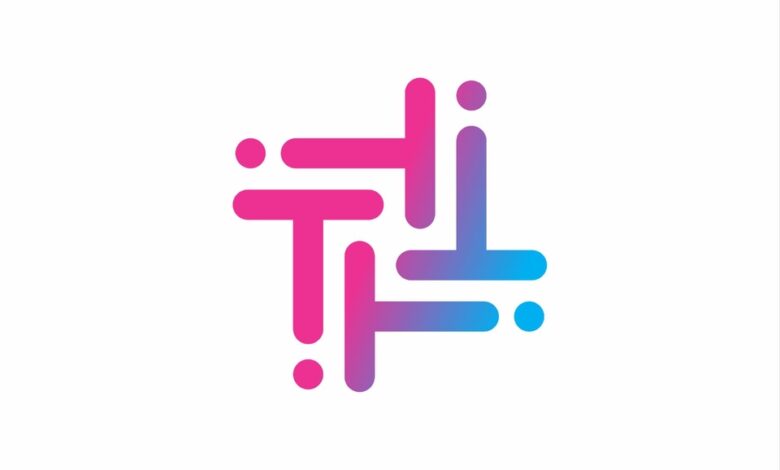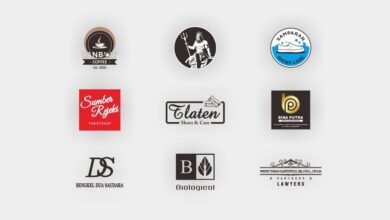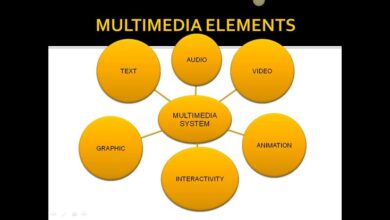
Minimalism in Logo Branding Less is More
Minimalism in logo branding isn’t just a trend; it’s a powerful statement. It’s about distilling a brand’s essence into its purest form, creating a memorable mark that resonates deeply with its audience. We’ll explore how this approach leverages simplicity to achieve maximum impact, examining the design principles, benefits, and future directions of this increasingly popular style.
From understanding the core principles of minimalist design – think clean lines, limited color palettes, and impactful typography – to seeing how successful brands have implemented this approach, we’ll cover it all. We’ll even delve into the practical aspects of creating your own minimalist logo, guiding you through the process step-by-step and offering design considerations to help you avoid common pitfalls.
Get ready to discover how less can truly be more!
Defining Minimalism in Logo Design

Source: googleapis.com
Minimalist logo design is a powerful approach that prioritizes simplicity and clarity. It’s about conveying a brand’s essence using the fewest possible visual elements, creating a memorable and impactful impression. This approach, far from being simplistic, demands careful consideration of every detail to achieve maximum impact.
Core Principles of Minimalist Logo Design
The core of minimalist logo design lies in its deliberate reduction. This isn’t about laziness; it’s a strategic choice to focus attention on the most essential aspects of the brand. Key principles include using a limited color palette, often monochromatic or employing only two or three colors, incorporating simple, easily recognizable shapes, and prioritizing negative space to create balance and visual breathing room.
The overall effect should be clean, modern, and easily scalable across various applications, from business cards to billboards.
Visual Elements Commonly Used in Minimalist Logos
Minimalist logos frequently utilize basic geometric shapes such as circles, squares, triangles, and lines. These shapes are versatile and easily understood across cultures. The use of a limited color palette, often focusing on a single color or a carefully chosen complementary pair, enhances the logo’s impact and memorability. Consider the iconic Nike swoosh, a simple checkmark-like shape that communicates speed and movement with remarkable efficiency.
Or the Apple logo, a simple, yet powerful representation of the brand’s core values. These examples demonstrate the power of simplicity in conveying complex ideas.
Comparison of Minimalist and Complex Logo Designs
Minimalist logos differ significantly from more complex designs in their level of detail and visual information. Complex logos often incorporate intricate illustrations, detailed typography, and a wider range of colors and textures. While complex logos can be visually striking, they can also be less versatile and more difficult to reproduce at smaller sizes. Minimalist logos, on the other hand, maintain their clarity and impact regardless of scale, making them ideal for diverse applications.
The trade-off is that minimalist logos require more strategic thinking and design skill to convey the intended message effectively with limited visual elements.
Psychological Impact of Minimalist Logos on Brand Perception
Minimalist logos often project a sense of sophistication, modernity, and trustworthiness. Their clean lines and uncluttered design can communicate professionalism and efficiency. The simplicity can also lead to better memorability, as the viewer isn’t overwhelmed with visual information. Studies have shown that simple, memorable logos are more likely to be recalled and associated with a positive brand experience.
For instance, a logo that uses only a few colors and a simple shape can easily be imprinted in a consumer’s mind, leading to better brand recognition and recall. This effect is particularly beneficial for businesses aiming to establish a strong and recognizable brand identity.
Benefits of Minimalist Branding
Minimalist branding, characterized by its simplicity and clean aesthetic, offers a multitude of advantages in today’s crowded marketplace. A well-executed minimalist logo and brand identity can significantly impact brand recognition, scalability, and overall cohesiveness, ultimately contributing to a stronger and more memorable brand presence. Let’s explore these benefits in more detail.
Improved Brand Recognition
A minimalist logo, by its very nature, is memorable. The absence of clutter allows the core visual elements to stand out, creating a strong and lasting impression on the viewer. Think of the Nike swoosh or the Apple apple – both instantly recognizable and deeply associated with their respective brands. This simplicity facilitates recall, making it easier for consumers to identify and connect with the brand across various touchpoints.
The less visual noise, the clearer the brand message, resulting in higher brand recall and a stronger market presence. This is especially crucial in a world saturated with visual information.
Enhanced Scalability Across Media
Minimalist logos excel in their adaptability. Their clean lines and simple forms translate seamlessly across various media, from small website icons to large billboards. The design doesn’t lose its impact when scaled down or up, maintaining its integrity and visual appeal. This adaptability saves costs and ensures brand consistency across all platforms – crucial for maintaining a unified brand image and preventing confusion amongst consumers.
Imagine a complex, highly detailed logo; shrinking it for a social media profile picture would result in a blurry, incomprehensible mess. A minimalist logo, however, retains its clarity and impact regardless of size.
Successful Minimalist Branding Examples and Their Impact
Many iconic brands have leveraged the power of minimalist logos to achieve remarkable success. The aforementioned Nike swoosh is a prime example; its simple yet powerful design has become synonymous with athletic achievement and innovation. Similarly, Apple’s apple logo, a simple yet elegant silhouette, is instantly recognizable worldwide, representing quality, innovation, and a user-friendly experience. The impact is clear: these minimalist logos have not only achieved brand recognition but have also become cultural icons, contributing significantly to the brands’ overall value and market position.
The clean, uncluttered design allows these brands to easily adapt their logos to different mediums without compromising their message.
Contribution to Cohesive Brand Identity, Minimalism in logo branding
A minimalist approach fosters a cohesive brand identity. The simplicity of the logo provides a foundation for a consistent visual language that can be extended across all brand materials, from packaging to marketing collateral. This consistent visual language strengthens brand recognition and builds trust with consumers. When all aspects of the brand—from the logo to the website design to the packaging—share a common visual thread of simplicity and clean lines, the overall brand message becomes clear, unified, and memorable.
This consistency helps to build brand recognition and create a strong, unified brand identity. This contributes to a stronger, more impactful brand presence, fostering trust and loyalty among consumers.
Creating a Minimalist Logo
Designing a minimalist logo isn’t about stripping away elements until you have nothing left; it’s about distilling your brand’s essence into its purest form. It requires careful consideration and a strategic approach to create a mark that’s both memorable and impactful. This process involves understanding your brand, simplifying its visual representation, and rigorously testing the final design.
Minimalist logo branding is all about clarity and impact; a simple, memorable design cuts through the noise. But getting your brand seen requires smart promotion, and that’s where understanding YouTube marketing comes in – check out this great guide on getting it on with YouTube to boost your visibility. Ultimately, a strong, minimalist logo paired with effective YouTube strategy creates a powerful brand presence.
The key to successful minimalist logo design lies in understanding that less is truly more. By focusing on core elements and eliminating unnecessary details, you create a logo that is easily recognizable, versatile, and timeless. This process, while seemingly simple, demands a thorough understanding of design principles and a commitment to iterative refinement.
A Step-by-Step Guide to Minimalist Logo Design
Creating a minimalist logo is an iterative process. It’s not a one-shot design, but a journey of refinement and simplification. Here’s a structured approach:
- Brand Research and Definition: Thoroughly understand your brand’s identity, values, target audience, and competitive landscape. Define your brand’s core message and personality. What feeling or emotion should your logo evoke?
- Sketching and Ideation: Begin by sketching various logo concepts, exploring different shapes, typography, and color palettes. Don’t censor yourself at this stage; the goal is to generate a wide range of possibilities.
- Simplification and Refinement: Critically evaluate your sketches, focusing on eliminating unnecessary details. Ask yourself: What is the absolute minimum required to communicate your brand’s essence? Refine your chosen concepts, gradually stripping away elements until you achieve a clean and impactful design.
- Digitalization and Vectorization: Once you’ve finalized your chosen sketch, create a digital version using vector software (like Adobe Illustrator). This ensures your logo is scalable without losing quality.
- Testing and Feedback: Test your logo’s effectiveness across different applications (business cards, websites, social media). Gather feedback from your target audience to ensure it resonates and is easily recognizable.
Key Considerations When Simplifying a Brand
Transforming a complex brand into a minimalist logo requires strategic decision-making. Several factors need careful consideration:
- Core Brand Values: Identify the 2-3 most important aspects of your brand that need to be visually represented. These will form the foundation of your minimalist design.
- Target Audience: Consider your target audience’s preferences and expectations. A minimalist logo suitable for a tech startup might not be appropriate for a traditional bakery.
- Brand Personality: The visual style of your logo should reflect your brand’s personality. Is it playful, sophisticated, modern, or rugged?
- Memorability and Recognizability: Simplicity is key to memorability. A complex logo is harder to recall than a clean, simple one.
- Versatility and Scalability: Your logo must look good at various sizes and across different applications. A minimalist logo is naturally more versatile in this regard.
Minimalist Logo Concepts
Here are three minimalist logo concepts for hypothetical brands:
- Tech Startup (Brand Name: “Synapse”): The logo features a stylized, interconnected network of nodes, represented by simple circles connected by thin lines, in a vibrant teal color. This symbolizes connectivity and innovation, core values for a tech startup. The typeface is a clean, modern sans-serif font.
- Coffee Shop (Brand Name: “Daily Grind”): The logo uses a simple, bold coffee bean icon, rendered as a single, dark brown shape, possibly slightly elongated. The shape is suggestive of a coffee bean without being overly literal. The typeface is a slightly rounded, friendly sans-serif font.
- Yoga Studio (Brand Name: “Inner Peace”): The logo incorporates a stylized lotus flower, simplified to its essential form – perhaps just the Artikel of the flower with subtle shading. The color palette is calming, using muted greens and light grays. The typeface is a thin, elegant serif font.
Testing Minimalist Logo Effectiveness
Testing the effectiveness of your minimalist logo options is crucial. Several methods can be employed:
- A/B Testing: Present different logo options to your target audience and track which design generates the most positive responses (e.g., higher click-through rates on a website).
- Surveys and Focus Groups: Conduct surveys or focus groups to gather feedback on the memorability, clarity, and overall appeal of each logo option.
- Usability Testing: Observe how easily people can identify and remember your logo in different contexts. This can involve showing them the logo alongside other logos and asking them to identify yours.
- Competitor Analysis: Examine how your minimalist logo compares to your competitors’ logos. Does it stand out? Is it easily distinguishable?
Minimalism Across Different Brand Applications

Source: googleapis.com
Successfully implementing a minimalist logo design requires careful consideration of how that simplicity translates across various brand touchpoints. A logo’s effectiveness hinges not just on its initial impact but also on its consistent and adaptable presence across diverse platforms, from the subtle elegance of a website to the bold statement of print materials.Maintaining a cohesive brand identity is crucial for building recognition and trust.
A fragmented visual identity, where the logo looks different on a website than on a business card, dilutes the brand’s message and weakens its impact. Consistency reinforces the brand’s core values and ensures that the message is clearly communicated regardless of the medium.
Adapting Minimalist Logos Across Platforms
The beauty of a minimalist logo lies in its adaptability. Its clean lines and simple forms translate seamlessly across different applications. However, this requires careful planning and execution. Consider how the logo will appear at different sizes and resolutions.
| Application | Considerations | Example | Visual Adaptation |
|---|---|---|---|
| Website | Favicon, header, footer, internal pages. Ensure scalability and responsiveness across various screen sizes. | Imagine the minimalist Apple logo: a simple apple silhouette. | The logo maintains its simple form but may be slightly larger on the homepage than in the footer, adapting to different contexts. Color might be adjusted for contrast against the website background. |
| Social Media | Profile pictures, cover images, post graphics. Consider the platform’s specific image dimensions and aspect ratios. | The minimalist Twitter bird logo. | The logo is scaled appropriately for the profile picture, often maintaining a clean background to avoid visual clutter. On cover images, it might be incorporated into a larger design, but always remaining a prominent and recognizable element. |
| Print Materials | Business cards, brochures, letterheads. Consider print quality and color accuracy. | The minimalist Nike swoosh. | The logo is printed in high resolution to maintain its clean lines. The color is carefully chosen to complement the print material’s overall design and ensure readability. The size will vary depending on the print material. |
Maintaining Consistency in Minimalist Branding
Consistency is paramount in minimalist branding. A successful minimalist approach relies on a carefully chosen color palette, typography, and overall visual style that remains consistent across all platforms. This creates a recognizable and unified brand identity. Inconsistent application can lead to confusion and dilute the brand’s message. For example, using different color variations of the logo across platforms can create a disjointed feel, undermining the brand’s carefully crafted minimalist aesthetic.
Challenges of Applying Minimalist Design to Complex Brands
Applying minimalist design to brands with complex product lines or multifaceted messages can present challenges. The simplicity of the logo needs to encapsulate the essence of the brand without oversimplifying or misrepresenting its offerings. This requires a deep understanding of the brand’s core values and a skillful approach to visual communication. For example, a company offering a wide range of services might find it difficult to convey all aspects of its business with a single, highly minimalist logo.
Careful consideration of secondary branding elements, such as icons or patterns, might be necessary to communicate the brand’s breadth.
Successful Minimalist Branding Across Diverse Platforms
Many brands successfully leverage minimalist design. Consider the Apple logo, consistently appearing across their website, packaging, and retail stores. The simplicity of the design ensures recognition regardless of the application. Similarly, the Nike swoosh is a globally recognized symbol, effectively conveying the brand’s message across a wide range of marketing materials and sporting events. The consistency of these logos across diverse platforms demonstrates the power of minimalist branding.
The impact of these logos is not diminished by their simplicity; instead, their simplicity contributes to their memorability and effectiveness.
Trends and Future of Minimalist Logo Design: Minimalism In Logo Branding
Minimalist logo design, while seemingly simple, is constantly evolving. Its enduring appeal lies in its ability to convey complex ideas with clarity and impact, a quality that will only become more valuable in the increasingly saturated visual landscape of the future. This evolution is driven by technological advancements, changing design sensibilities, and the ever-shifting needs of brands navigating a digital-first world.
Emerging Trends in Minimalist Logo Design
We’re seeing a fascinating interplay of simplicity and sophistication in current minimalist logo trends. The focus is shifting beyond mere reduction to a more nuanced exploration of form, negative space, and subtle details. This includes a greater use of custom typography, often playing a central role in conveying brand identity. We are also seeing an increase in the use of gradients and subtle color variations within a primarily monochromatic palette, adding depth without sacrificing the core principle of minimalism.
Furthermore, the incorporation of geometric shapes, particularly those with softer edges and less rigid lines, contributes to a more approachable and less austere feel.
Evolution of Minimalist Aesthetics in Branding
The future of minimalist aesthetics in branding suggests a move away from stark, purely geometric designs towards a more expressive and evocative style. This involves a greater emphasis on the emotional resonance of the logo, achieved through careful consideration of form, color, and the overall feeling the logo evokes. Think of the evolution of the Apple logo – from a highly detailed image of an apple to a sleek, minimalist silhouette.
This transition reflects a broader trend towards simplicity that is both visually striking and emotionally impactful. We can expect to see more logos that communicate brand values not just through literal representation but also through subtle, almost subconscious cues.
Role of Technology in Shaping Minimalist Logo Design
Technology plays a crucial role in shaping minimalist logo design, both in its creation and application. Vector-based software allows for the creation of infinitely scalable logos, crucial for consistent brand representation across various platforms. AI-powered design tools offer new possibilities for generating minimalist logo concepts, providing designers with fresh inspiration and accelerating the design process. Furthermore, the increasing importance of digital brand experiences necessitates logos that translate seamlessly across various screens and resolutions, a task that minimalist designs are particularly well-suited for.
The ability to create responsive logos that adapt to different contexts is a significant factor shaping the future of minimalist design.
Predicted Future Trends in Minimalist Logo Design
A visual representation of predicted future trends might include a logo featuring a single, subtly curved line forming a recognizable symbol, rendered in a soft gradient of complementary colors. Another example could be a logo consisting of a geometric shape with a slightly textured surface, giving it a tactile feel, conveying a sense of sophistication without compromising its minimalist nature.
A third example could be a logo utilizing a unique, custom typeface as its primary element, with minimal additional graphic elements, emphasizing the importance of typography in brand communication. These examples showcase the future of minimalist design moving towards more nuanced explorations of form, texture, and color while maintaining its core principles of simplicity and clarity.
Closure
Ultimately, minimalism in logo branding is about strategic simplicity. It’s about creating a logo that’s not only visually appealing but also highly effective in conveying a brand’s message and values. By understanding the principles, benefits, and process of minimalist logo design, businesses can create a lasting impression and build a strong brand identity that stands the test of time.
Embrace the power of less, and watch your brand soar.
Essential Questionnaire
What are some common mistakes to avoid when designing a minimalist logo?
Oversimplifying to the point of obscurity, using too many fonts, and neglecting color psychology are common pitfalls. Ensure your logo is recognizable and easily scalable.
How can I ensure my minimalist logo is memorable?
Focus on creating a unique and distinctive shape or symbol. Think about the emotional response you want to evoke and choose colors and fonts accordingly. Simplicity doesn’t mean boring!
Is minimalism suitable for all brands?
While minimalism works beautifully for many, it might not be ideal for brands with complex or multifaceted identities. Consider your brand’s personality and target audience before committing.
How much does it cost to get a professional minimalist logo designed?
Costs vary widely depending on the designer’s experience and the complexity of the project. Expect to invest a reasonable amount to ensure a high-quality, effective logo.





